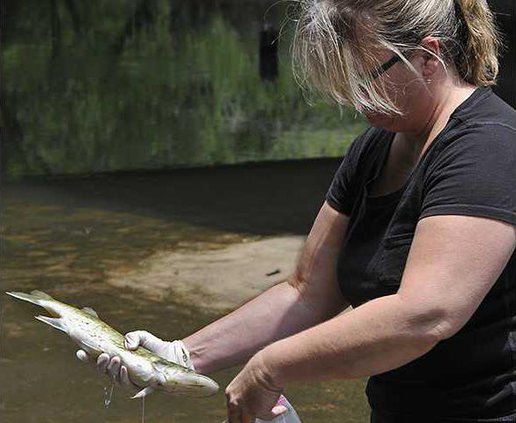About halfway through a three-year project studying the Ogeechee River, Georgia Southern University researchers and their partners offered an update on their progress during a public forum Tuesday evening at the university.
The project still has a lot of work to be done, and researchers did not divulge any information about current river conditions except that the drought is over, with more than 45 inches of rainfall in the area since January.
"At this point we don’t have a lot of concrete conclusions or trending information," said Dr. Jeffrey Underwood, chair of the Georgia Southern University’s Department of Geology & Geography.
The project is a Supplemental Environmental Program and was mandated as part of an enforcement action taken by the Georgia Environmental Protection Division for violations of the Georgia Water Quality Control Act by King America Finishing. King is a textiles plant located on the river near Dover and Cooperville, communities in Screven County.
The program is funded by Milliken, a textiles company that bought King America. King was targeted following a massive fish kill in 2011 that killed about 38,000 fish. Investigations determined that columnaris, a bacterial disease caused by stress, was the cause of the fish kill. But many charged the stress was caused by pollutants in the river that came from King. The fish kill began just downstream of the King
America plant and spread for miles downstream.
The project is overseen by Georgia’s Environmental Protection Division, he said.
The project involves the lower Ogeechee River and the flood plain near Oliver.
According to the project’s website, http://research.georgiasouthern.edu/:
"Over the next 2.5 years, Georgia’s Ogeechee River will be closely monitored. Georgia Southern University’s Department of Geology and Geography will study atmospheric and terrestrial observations and research focused on processes in the watershed and the Department of Biology, in conjunction with the Phinizy Center for Water Sciences, will focus on in-stream processes and conduct biological sampling of the Ogeechee River. This research will ensure a long-term, holistic approach to understanding Ogeechee River Basin."
The project is meant to provide more than short-term monitoring of biogeochemical components in the river basin, but also to ensure a long-term approach for research conducted on the Ogeechee River, according to the site.
Two teams and partners are involved in the study.
A group from the GSU Department of Geology and Geography focuses on atmospheric and terrestrial processes in the watershed while the other, from the GSU Department of Biology in conjunction with the Southeastern Natural Sciences Academy, targets the in-stream processes and biological communities of the river.
The study examines every aspect of the river and its environmental impact, Underwood said.
"We trace the water from the sky as it makes its way to the stream channel."
Several GSU professors spoke about the project, explaining steps the teams take to study the river and monitor its condition.
Dr. John Van Stan explained how rainfall travels through the tree canopy, down the trunks, and is either evaporated, absorbed or travels to the ground, where it is filtered through litter (leaves and plant matter) before it enters the ground, and eventually seeps into the stream flow.
There are three international scholars collaborating at the site and the project has been awarded a national science grant.
"This has been a lot of work and a lot of fun, too," Van Stan said.
Dr. James Reichard spoke about aquifers, how they work, and said groundwater moves a foot a day at is fastest.
Dr. Jaque Kelly shared how her team uses radon to track groundwater, and said radon occurs naturally through the breakdown of uranium, and that the river levels are "way below" the level accepted by the EPD.
Dr. Oscar Flite shared how chemistry samples are taken at various river testing sites, and said things such as dissolved oxygen and bacterial activity are monitored.
A bacteria that emits light is used to test the water samples, said Dr. Risa Cohen. If the bacteria stops emitting light, this indicates toxicity, she said.
Others spoke about various aspects of the project, including the collection of fish, some of which are released back into the river, and some that are used to study tissue samples.
Saxon writes for the Statesboro Herald.



